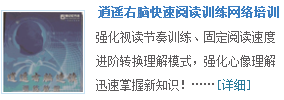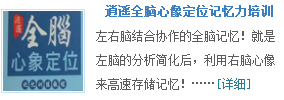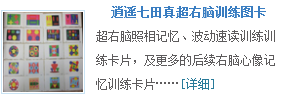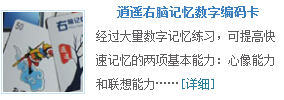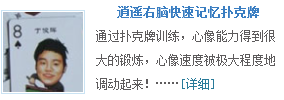I. Objectives:
1.To introduce the topic of places and transport.
2.To activate their existing vocabulary and learn the meanings of new words
related to places and transport.
3.To talk about visits and means of transport.
II. Language Points:
单词: 1. follow 2. north 3. northwest 4. again 5. know 6. south 7. southwest
词组: 1. go down 2. go up 3. be sure 4. be afraid 5. the Sunnyside Garden 6. bus stop 7. by underground 8. know the way 9. have to
句子: Follow me.
Come with me.
Don’t be afraid.
Let’s go down here. ------No, I can’t.
------Well, let’s do.
------OK. We can go by bus/by underground/by van
III. Suggestion:
1. Review and warm up:
(1) 学生向同伴描述自家周围环境(课前让学生画一张画,说明自家周围建筑的名称);
(2) 呈现一张简图,让学生边听边填出正确名称:
Police station Bookstore China Bank
① ② ③
____________________________________________________
BEIJING WEST ROAD
____________________________________________________
Huacheng Supermarket Ninghai High School
④ My house ⑤
My home is on Beijing West Road. It is between Huacheng Supermarket and Ninghai High School. From my home we can see a bookstore on the opposite side of the road. A bus stop is in front of the bookstore. A police station is on the right of the bookstore. On the left, a China Bank is next to the book store. You can also find a shopping mall nearby.
2.Comic Strip Finding Your Way.
(1) Present:
1)Questions:
Where are Hobo and Eddie standing? (On top of a hill)
How can they go down the hill? (Eddie jumped down/ Hobo climbed down)
What does the signpost say? (It says “Dogs this way”)
Will they have to go up the hill? (Yes, they will.)
2)Sum up: (评价)
3)补充训练:
A. Drill “Let’s…”. “Don’t be afraid”
a.Let _____(we) go to the cinema.
b. -A: It’s raining. Let’s take a taxi. (同义句:Shall we go by taxi?)
-B: That’s a good idea, but I have no money with me.
-A: Never mind. I’ve got some.
B:Translate the following into Chinese:
a. Don’t be too tired.
b.Don’t be late for school.
c.Don’t be so sure.
d.I will go with you. Don’t be afraid.
e.Don’t do it like that.
f.Tom with his friends is going up the hill.
g.Let me help you carry it.
h.I’m afraid Neil is still at school.
i.Some of the girls are afraid of dogs.
3.Let’s go on an outing.
Come to Part A.
Present and question:
Where is Beijing? ------Beijing is in the North of China.
Which city is north of Nanjing? ------Tianchang City is.
What’s north of Xuanwu Lake? ----Nanjing Railway Station is north of Xuanwu Lake.
Our playground is north of Caochangmen Bridge.
Our school gate opens to north.
I’m lost. Which direction is north/south?
The birds fly south in winter.
And also northwest, southwest, northeast , southeast.
Explain the context and instructions to the class.
Pay attention to the directions on the map. i.e. north----up; south----down; west----left; east-----right
?Go up to +重要地方,大地方;go down to +小地方
Read aloud:
1. the zoo
2. north of Beijing Sunshine Secondary School
3. the Sunnyside Garden
4. northwest of the zoo
5. the Lake Park
6. southwest of Beijing Sunshine Secondary School
补充归纳:地方名称(评价)
练习册What are these? Write the names in the blanks.
Complete and check A
Present Part B:
If you want to go to Wutai Stadium/Gymnasium, what will you take? I often play badminton there. So I take my badminton racket and some shuttlecocks with me. I live not far from there. I go there by bike. I never take a taxi there, haha.
Yangzhou is east of Nanjing, what shall we go by if we go there for a spring outing?-----We’d like to go there by bus. And also speak out some sentences with “north” , “ south”
London is to the west of China. My father went there by aeroplane last year.
Look at the map on page 39, the Sunnyside Garden is northwest of the Sunshine Secondary School. We can go there by underground. Shall we take the underground to go there? Yes. Let’s go there by underground.
补充操练:
A.口头翻译并变句:
1.He’ll go to Tiananmen Square by underground.
2.We can go up to the top of Zijin Mount in a cable car.
B. 替换练习:
1.Let’s go to Xuanwu Park. Ok, we can go by bus or by bike.
2.Let’s go to Shanghai for a big shopping. Ok, we can go by train.
Homework:
1.听读背诵Comic strip
2.评价
3.听录音预习
The second period
Reading ( 1 ) A Lucky Escape
I. Objectives: 了解课文整体大意
To infer meaning from keywords, context and existing knowledge
To understand a series of events and simultaneous actions
II. Language Points:
单词: 见课本
词组: 1. get a call 2. live nearby 3. at once 4. get out of/into their car 5. jump out of the van 6. just push into a van 7. drive away 8. run away quickly 9. take different routes 10. try to do sth. 11. meet at the police station 12. catch them 13. be surprised to do sth. 14. be surprised at sth. 15. turn right into 4th street 16. turn left into Park Road 17. stop doing sth. 18. in the end 19. in police uniform 20. at the traffic lights 21. a lucky escape
句子:
1.It worked.
2.Paul tried to open the door but failed.
3.Shall we take different routes?
4.I’ll go along 6th street.
5.I’m going to take another route.
6.The van stopped at the traffic lights.
7.Justin and Paul jumped out of the van and ran away quickly.
8.Suddenly, Justin stopped talking.
9.He was surprised to see the three men in the police station.
10.We stopped the van because they didn’t close the back door.
11.They tried to run away but we caught them in the end.
III. Present.
Part A. The words and background of the passage.
1.用图片呈现: police station, police uniform, robbers, green van, traffic lights, knife, building..
2.利用B1学习单词:nearby, push, pull, in the end.
3.利用C2的图使学生迅速在脑中构建一幅场景,知道:
Where is the restaurant.?
Hotel, Hill building, police station, Park Road, 4th Street, 5th Street, 6th Street, 7th Street, 8th street.
IV. 阅读:
1.通读(看、听、回答问题):
1)Who gave a call to the twin brothers?
2)What’s the call for?
3)What did the robbers do with the twins?
4)What did the twins do then?
5)Where did the twins get at last and what about the robbers?
6)What’s the end of the story?
2.细读(标出Justin和Paul如何到达the police station的路线):
3.跟读(做B2)
4.品读(分角色读,做C)
IV. Homework:
1.Read and imitate the passage after the tape.
2.Write out the instructions of the twins took.
3.Preview: Vocabulary, consult the following words in the dictionary:
“turn, cross, straight”.
The Third Period
Reading (2 ) A Lucky Escape
Objectives :
To identify specific detail by following a route and marking points on a map
要求进一步掌握课文内容,巩固有关词汇和句子(同reading 1 )
操作:(Power Point)
1.听读,回忆填表:
PersonsWordsAction
Susan
Robbers
Justin
Paul
Policeman
2.Keywords study and make sentences. 参考书P140+补充“outing”, “nearby”, “turn”.
3.Translations: 评价手册1
课文中重点句汉译英
评价手册
III. Homework:
1.总结笔记;
2.复述课文;
3.向老师推荐一篇传奇故事.
The Fourth Period Vocabulary
I. Objectives:
To recognize traffic signs.
To give and respond to directions.
II. Language Points:
1.Road signs:
英文中文标志
Turn left向左转←
Turn right向右转→
Straight on 一直走↑
Crossroads十字路口
Traffic lights交通灯
Zebra crossing斑马线
2.Words: entrance/exit, cross roads, crossing/turning, correct/right, straight
3.Important sentences:
1)To get to the zoo, turn left when you come to the crossroads.
2)The entrance is on your left.
3)When you come to the corner of the road, turn right and you’ll see a hotel.
4)Cross the road and you’ll see the museum.
5)Which map/route is the correct one?
4.操练(补充):
(1)Sum up the expressions of asking the way and also the expressions of responding to the directions:
1)Is there an underground near here?
2)How can I get to the zoo?------Go straight and turn left at the second crossing.
3)Where’s the library?------It’s down Bridge Road on the left.
4)Could you tell me the way to the museum?------Go down this road till the corner of it, turn right and you’ll see it.
5)Please tell me the way to the Sunnyside Park.------Walk along the street and take the first turning on the right.
(2) 完成句子(翻译)(Make slides with Power Point for the use of the next period):
(3)评价手册II (Power Point).
(4) 评价手册I
Homework:
1.评价手册III。
2.评价手册P54 V
3.练习册A,B。
4.Preview. Write out your difficult points.
The Fifth Period
Grammar (1) Prepositions of movement
I. Objectives:
1.Prepositions of movement.
2.Speak out how to get to Sunshine Town Railway Station from Sunnyside Shopping Mall..
II. Teaching Points:
1.Words: train, tunnel, stair, across, round, off, onto, step, side, bridge, railway station,
2.Phrases: swim across the pool, go through a tunnel, walk along the road, climb up the hill, walk round, jump over the chair/walk over the bridge, walk down/up the stairs, walk down/up the steps to Sunshine Park, walk from sofa to the window, the way to Sunshine Town Railway Station, at the other side of the park, see Sunnyside Shopping Mall, make plans
III. Teaching procedures:
1.学生两人一组讨论图片。理解表明不同方向的介词。完成“找规律”练习.
2.记忆游戏,进一步理解运动方向介词(用纸盖住图片的句子,就图片提问。全班分成二大组,每大组轮流提问。
3.读图,学习对话“How can I get to Sunshine Town Railway Station”:
(1)指出阳光车站位置以及桥和台阶的位置,直接呈现单词:railway station ,bridge ,step .
(2)利用讲台,学生站位理解“side”:
at the other side of the park=on the opposite side of the park.
He went round to the side of the house.他绕到房子的侧面。
I have a pain in my left side. 我身体的左侧隐隐作痛。
The chair has arms at the sides. 这张椅子两边有扶手。
(3)带领学生学习图上的不同路标。朗读路标名称。
(4)口头完成对话,然后再写出。
(5)两人一组找出不同地方进行对话练习。
Homework:
The Sixth Period
Grammar (2) Simple future tense with “will” and “Shall” “be going to”
Objectives:
To recognize the use of “will”,” shall” and “be going to” to talk about the future
To make a dialogue about a trip to certain place as “ A trip to the Summer Palace”
Teaching points:
1.Words: join/ paper / campfire/ win/ cloudy/
2.Phrases: make plans/ fix plans/ join sb. (take part in an activity)/ in the near future/
win the game(match)/see the doctor /paper plates and forks/ start a campfire
3.Important sentences:
They will see us.
Shall we take different routes?
Will you join us ?
When shall / will we meet?
We shall / will meet at the school gate.
We shall/ will take the bus to the Summer Palace.
Millie will take her dog with her.
I won’t take my umbrella.
I don’t want to carry it all day.
She is going to take another route to visit her grandfather next Friday.
We are going to win the game.
It’s so cloudy. I think it’s going to rain.
I hope it won’t rain tomorrow.
Daniel and Kitty are going to buy food.
They are going to start a campfire.
She is going to cook. I am going to bring paper plates and forks.
4.Identify the difference between “take / bring , carry”
5.Simple future tense
Teaching Procedures:
1.Let some students write some phrases on activities or present some pictures of actions , e.g.
go shopping / go to Reading / Football / Swimming Club
play the piano/play the basketball/tennis/badminton
take the bus/underground/train/bike
walk home /across the bridge
watch TV/ movies/films/matches/games
phone / call friends
stay with Steven
join the Club/ the team
They may write some more phrases on directions to feel proud of themselves.
e.g.: walk across the bridge
take the second turning on the left
Go straight along the road
Then ask them to write “I will” or “ He will “before each activity.
2.Learn the pictures on P45 to know when to use “ will” & “shall”
3. More sentences:
She will be late for the party.
Mr. Wu will explain this rule.( things that will happen)
I will/ shall have an apple for lunch.
We shall/ will take the dog to the park tomorrow. (plans that we are making now)
3.Let them speak out what they will do next weekends/ tomorrow/ next month
4.Take students through the tables at the top of page 46. Give examples of positive sentences, negative sentences, asking and answering questions. Write on the blackboard:
They will go to the Summer Palace.
Will they go to the Summer Palace? Yes, they will. No, they won’t.
We won’t carry the umbrella with us all day.
5.Ask the students to complete the conversation on their own. And then check by reading through it in pairs.
6.Ask and answer the questions:
What will they do? They will go to the Summer Palace.
When will they meet? They will meet at 8 a.m.
Where will they meet? They will meet at the school gate.
How will they travel? They will travel by bus.
Will Millie take her dog? No, she won’t.
Will her cousin come? Yes, he will.
What will the weather be like? Simon hopes it will be sunny. It won’t rain.
7.Write “be going to” on the board. Go through the sample sentences P47 C and give more examples and ask them to turn them into negative sentences.
We are going to have a spring outing next week.
He missed the school bus. He is going to be late for school.
She is going to visit Youth Center this afternoon.
They are going to see the doctor at ten this morning.
Joe is going to play basketball on Monday afternoon.
It is going to rain tomorrow.
We are going to have a picnic in Sunshine Park on Saturday.
They are going to have a football match.
8.Go through and complete Part C
9.Extra Exx.
A. Put them into English:
1)Sandy 下星期放学后要打网球。
2)我下星期二的晚上要读一本书。
3)Peter 和Sam下星期三要打篮球。
4)Daniel下星期四要去游泳。
5)你下星期五的晚上要为我们举行营火会。
6)Emily 下星期六将看电影。
7)我英国的笔友们下星期天要去教堂。
B. Complete the sentences:
1)能告诉我去阳光公园的路吗?
Can you tell me _______ _______ _______ _______ Park?
2)今天下午我要参加一个生日聚会。
_______ _______ to a birthday party this afternoon.
3)明天你在家还是上班?
_______ you _______ at home or at work tomorrow?
4)叔叔和婶婶下周六要来看我们。
Uncle and Aunt _______ _______ to see us next Saturday.
5)Mike下学期不买新自行车。
Mike _______ _______ a new bike next term.
10.Homework:
1)Go over Grammar and write down the important sentences in your notebooks.
2)Write down what your family are going to do this weekend.
The Seventh Period
Integrated skills
Objectives:
To recognize key expressions about directions
To use key information given in instructions and identify the specific order of them
To develop intensive listening skills by following instructions and marking a route
Language points:
Words: 1. turning 2. path 3. towards
Phrases: 1.take the second turning 2. on the right/left 3. cross the bridge/road
4. at the traffic lights/at a traffic light 5. walk past the police station
Important Sentences:
1.Cross the bridge and turn right.
2.Take the second turning on the right.
3.Cross the road at the traffic lights.
4.Walk past the police station
5.Walk along a small path next to the river.
6.Walk straight on and you’ll see the traffic lights.
7.When you are at the big tree, turn left and walk towards the bridge.
8.See you there.
Teaching Procedures
1.Go through the instructions with the Ss and explain “past’ & “pass” “towards”
2.Read the map first and give a proper words.
3.Listen to the tape and finishing doing A2 & A3
4.Part B: Listen and learn then discuss how to identify
补充练习:
听读李给David 的信,然后画出去李磊家的线路图:
Dear David,
Please come to my home for supper at six this evening, Here is a map to help you find my house. Take bus No. 22 and get off at Guangming Road. Then turn right into Xiangyang Street and walk on. Take the first turning on the left. It’s the third house on the left. You can’t miss it.
Li Lei
GUANGMING ROAD
___________ ____________
bus stop
The Eighth Period
Study skills
?Objectives:
1. To use search engines effectively to find information on the Internet.
2. To be able to discover new materials and ideas by category on the Internet.
?Keys to the period:
1. To let them know some powerful search engines: Google, Sina, Yahoo, etc.
2. To help them move from the more general idea of a topic to the more specific aspects and details involved.
?Suggestion:
1. Take the students to the classroom with multimedia computers for them being on the Internet.
2. Talk to students about a Web browser.
3. Lead them to search some materials they are interested in.
4. Ask the students to do the task. and ask them to compare their work and discuss any disagreements. Check around the class.
The Ninth Period
Main Task
?Objectives:
1. To select, organize and present information
2. To express directions and information in the context of writing a letter of invitation
3. To develop an understanding of the key components of letter writing
Language points:
?Words:
1. barbecue 2. picnic 3. exit. 4. invite/invitation 5.farewell 6. signature
Phrases:
1. half of the students 2. have a barbecue/ a farewell party
3. invite sb. to do sth./ invite sb to sw. 4. yours faithfully 5. at the corner of ….
?Sentences:
1. Mr. Wu thinks a picnic will be better.
2. We are happy to invite you to a farewell party.
3. Please complete the note on the next page to tell us if you can come.
4. The map shows you how to get to Sunshine Park.
5. We look forward to seeing you at our party.
6. Here is the route t Sunshine Park.
7. Take the underground.
8. Get out at Exit A.
?Notes:
1. Explain and identify the differences between:
1. CROSS & ACROSS 2. PAST & PASS
2. The use of “RIGHT”
Sunshine Park is right there.
If you want to eat Chinese food, you are here in the right place.
Walk across the bridge and take the second turning on the right.
3. Talk to students about letter formats. Point out the salutation “Dear…” and the closing “Yours faithfully”.
?Suggestion:
1. Ask students to discuss where Sunshine Park should be located according to the picture on page 51. mark it and write instructions on how to get from the underground exit to Sunshine Park.
2. Have students in pairs to write a letter of invitation to each other.
?Homework:
练习册: B
.
The Tenth Period
Checkpoint
?Objectives:
1. To check the use of prepositions of movement
2. To check the use of “will” and “ be going to” to talk about the future
3. To check how to give the directions practically
?Suggestion:.
1. Start by asking students questions about what they have learned in this unit.
2. Have students in groups of four to do a project:
To survey where they would like to go for a spring outing.
To write down what they would like to do there.
To know what they would like to bring
To give the instruction to how to reach the certain destination.
3. To give them a website to have a tour to the Palace Museum on the Internet and elicit them to make a dialogue of invitation to the Palace Museum and they will give the instruction to Taihe Palace, Baohe Palace and Yonghe Palace.
Unit 3 Finding your way(Integrated Skills)
Objectives
1. To recognize key expressions about directions
2. To develop intensive listening skills by following instructions and making a route.
3. To give directions in an everyday context.
4. To recognize key expressions about directions
5. To develop intensive listening skills by following instructions and making a route.
6. To give directions in an everyday context.
Teaching aids: A recorder Multiple-media
Teaching procedures
Step1. revision
1. a dialogue
The twin brothers Paul and Justin told their friend Sandy about their lucky escape. But Sandy has no idea how they got to the police station after they jumped out of the van through the back door. So the twins use a map to show her their routes.
2. road signs
When you go out for a trip, you must know how to read a map. When you travel in the city, you can find road signs here and there. Look at these road signs, what do they mean?
3. revise some prepositions of movement
Step2. presentation
1. recognize some simple instructions
Do you know the meaning of this sentence? What should you do ? Which picture will you choose?
2. Look at the map. What can you see?
These are fields. We can see a few roads across the fields. There is a river across the fields. Over the river, there are 3 bridges. Next to the river, there is a path. Along the path, we can see three young trees. Now, I’d like to know if you can give directions in English correctly.
3. The Class 1 Grade 7 students and the exchange students from Britain are going to play a game
called “Treasure Hunt”. There’s some treasure somewhere in the fields. Let’s try to find it. Mr. Wu will give us some instructions .
a. First listen to the tape and put the instructions into the correct order.
b. Listen to the instructions again, ask a student to draw the route and a treasure chest
on the map.
Step3. speak up: giving directions
You are inviting a classmate to your home. You need to give him/her directions.
Listen to Millie &Neil’s conversation first, then draw the route on the map.
Step4. pairwork
Let the students make up their own dialogues
Homework
中译英
1, 走过木屋,右转,沿靠河的小路走。
2, 从你的学校走到我的学校很容易。
3, 直走,在红绿灯处过马路。
4, 朝市场方向走,第一个十字路口左转。
5, 下了台阶进入公园。
介词填空
1. There is a small bridge _____ the river.
2. Go _____ the road and then you’ll see the bookshop _____ your right.
3. We go to school _____ Monday _____ Friday.
4. Don’t walk _____ the forest alone.
5. Go _____ the steps to the top of the mountain.
6. The students are standing_____ the teacher and asking questions.
7. He can swim _____ that river.
8. Don’t look _____ _____ the window in class.
9. Do you know the way _____the nearest hospital?
10. There are some traffic lights_____ the crossroads.
7B Unit3 Finding your way
Welcome to the unit
Teaching aims and demands:
New words: follow, north, north-west, south-west
Teaching methods: task-based approach
Teaching task: 1. To introduce the topic of places and transport.
2. To talk about visits and means of transport using model sentences.
Teaching aids: tape recorder
Teaching procedures:
Ⅰ. Warm-up (presentation)
Ask the students on duty to give us a short report about the Sunshine Town.
Ⅱ. Listening
Listen to the tape, answer my question, “Did Hobo, in fact, know the way?” Help the Ss to answer.
Listen again, Ss read after the tape recorder, then do some True or False exercises. Check the answers with the whole class.
Language points:
1. follow me
2. go up and down
e.g. Let’s go down the hill together.
3. Don’t be afraid.
e.g. (1) Don’t be late for school.
(2) Don’t play in the street. It’s too dangerous.
be afraid to do. be afraid of sth.. I’m afraid that+从句
e.g. (1) The little girl is afraid to go out in the evening.
(2) Little Tom is afraid of dogs.
(3) I’m afraid that I can’t go with you. I have a lot of work to do.
Ⅲ. Main task
Introduce the topic of place and transport.
Ⅳ. Discussion (task)
Talk about visits and means of transport using the model sentence ‘---Let’s go to the zoo
.---OK. We can go by bus.
Language points:
1. The zoo is north of Beijing Sunshine Secondary School.
north of
south, west, north-west, south-west
e.g. The library is south of the classroom.
The playground is west of the classroom.
2. ---How do we get there?
---We can go by bus.
by air/bus/car/bike/underground
Ⅴ.Sum-up
Go through the new words and the language points during this lesson.
Ⅵ. Homework
.Review the contents of this lesson.
牛津7B Unit 3 Finding you way
Main task & Checkout
常州百丈中学 费琴华
学习内容分析: 在学本课内容前,学生已会识别有关方向的表达方式,并能听指令画出路线图. 本节课在此基础上授导学生综合运用所学知识,能在写邀请函的语境中组织信息并指明路线.
学习者分析: 大部分学生已掌握本单元教授的语法和词汇,方位及行走路线的表达法.
目标: 1.进一步巩固所学方位及行走路线的表达方式.
2.了解邀请信的写作格式并能在其语境中组织信息并指明路线.
3. 复习一般将来时和部分介词.
重点: 复习路标, 一般将来时和部分介词.
教学难点: 使学生能在写邀请信的语境中组织信息.
解决措施: 创设情景,让学生参与讨论表演等系列活动,在活动中熟练运用所学知识.
教学步骤:
Step1.Revision
1.Revise the road signs
2.Play a guessing game: Ask students to find the places according to the paragraphs.( 8 minutes)
Step2. Presentation
1.Suppose our school wants to organize a school trip. What should we think about? The teacher provide the students with some questions.eg. When will you go?\ How will you go there? \ Who will you go with?etc. Ask them to discuss.(3 minutes)
2.Say Daniel and Simon are organizing a big farewell party for the exchange students. They asked everyone to complete a questionnair. Ask students to choose their answers to the questionnair then ask them to check their answers. Then present the results, ask them to read together and answer the questions.( 6 minutes)
3.Present an invitation letter and show them how to write such kind of letter. Ask them to try to write down the beginning and the end of the letter the complete the letter.(5 minutes)
Step3. Presentation
Ask students if some guests don’t know the way, what should they do? ( They should draw a map to tell the guests the routes and they should also give directions in the letter. Then finish the rest part of the letter according to the map.( 5 minutes)
Step4. Discusson
Say a group of students want to visit our school , now they are in Hongmei Park. Give them directions ask them to work in group of four to discuss how many ways they can give the students.(8 minutes)
Step5.Revision
Revise the Simple Future Tense and the prepositions of movement. Give them some exercises.(8 minutes)
Step6. Homework
Ask students to write an invitation letter according to Part B1.( 2 minutes)
教学后记:
本文来自:逍遥右脑记忆 http://www.jiyifa.net/chuyi/72651.html
相关阅读:新目标初一英语下册Unit 1 Where’s your pen pal from导学案
闂傚倸鍊搁崐鎼佸磹閻戣姤鍤勯柛鎾茬閸ㄦ繃銇勯弽顐杭闁逞屽墮閸熸潙鐣烽妸褉鍋撳☉娅亝绂嶆潏銊х瘈闁汇垽娼у瓭闂佺ǹ锕ら顓犳閹炬剚娼╅柤鍝ユ暩閸樺崬顪冮妶鍡楀闁稿﹥娲熷鎼佸籍閸喓鍘藉┑鐘绘涧濡盯宕洪敐澶嬬厸鐎光偓鐎n剙鍩岄柧缁樼墵閺屽秷顧侀柛鎾跺枛楠炲啳顦崇紒缁樼箞瀹曡埖顦版惔锝傛(闂傚倷绀侀幖顐ょ矙娓氣偓瀹曘垺绂掔€n偄浜楅梺闈涱檧婵″洨绮绘ィ鍐╃厵閻庣數枪娴犙囨煙閸愬弶鍣洪柕鍥у閺佹劙宕ㄩ鐘荤崜缂傚倷鑳剁划顖滄崲閸儱鏄ラ柍褜鍓氶妵鍕箳瀹ュ浂妲銈嗘礋娴滃爼寮婚埄鍐ㄧ窞閻庯綆浜炴禒绋款渻閵堝啫鍔滅紒璇茬墕椤繐煤椤忓嫮顔愰梺缁樺姈瑜板啯淇婅濮婃椽宕ㄦ繝鍌氼潊闂佸搫鎳忕划宀勫煝閹惧顩烽悗锝庡亐閹锋椽鏌i悩鍙夋悙鐎殿喖鐖奸獮鎴︽晲婢跺鍘甸梺鎯ф禋閸嬪懐浜搁銏$叆闁哄洦锚閻忔煡鏌$仦鑺ヮ棞妞ゆ挸銈稿畷銊╊敊闁款垰浜炬い鎺戝閻撴稑顭跨捄鐚村姛濠⒀勫灴閺屾盯寮崸妤€寮伴梺闈涙閹虫ê顕f繝姘ㄩ柨鏃€鍎抽獮宥夋⒒娴h櫣甯涢柛銊﹀劶閹筋偆绱掗悙顒€绀冪€规洜鏁稿Σ鎰板箳濡ゅ﹥鏅╅梺鍏间航閸庨亶寮冲Δ鍐=濞达絼绮欓崫娲煙閻熺増鎼愰柣锝呭槻椤粓鍩€椤掑嫬鏄ラ柍鈺佸暞婵挳寮堕悙闈涱暭闁稿鎳樺濠氬磼濞嗘劗銈板┑鈩冦仠閸旀垵顫忛挊澶樺悑濠㈣泛锕﹂敍娆忊攽閻樼粯娑фい鎴濇搐閻e灚绗熼埀顒勫箖濡ゅ懏鏅查幖绮瑰墲閻忓秹姊虹粙娆惧剾濞存粍绻堟俊鐢稿礋椤栨艾鍞ㄩ梺闈浤涚仦鐐啇濠碉紕鍋戦崐鏍蓟閵娿儍娲敇閻戝棙缍庡┑鐐叉▕娴滄粌顔忓┑鍡忔斀闁绘ɑ褰冮顏堟煕閿濆骸寮慨濠冩そ楠炴牠鎮欓幓鎺濇綂闂備胶枪椤戝棝宕濋弴銏犵叀濠㈣埖鍔栭崑銊х磼鐎n厽纭堕柛鏃撶畱椤啴濡堕崱妤冪懆闁诲孩鍑归崣鍐箖閿熺姵鍋勯柛娑橈工瀵灝鈹戦埥鍡楃仯闁告鍛殰闁煎摜鏁哥粻楣冩煕濞戝崬鏋ら柟鍐叉噽缁辨帗娼忛妸銉х懖濠电偟鍘х换妯讳繆濮濆矈妲鹃梺浼欑到閵堢ǹ顫忔ウ瑁や汗闁圭儤绻冮ˉ鏍ㄧ節閻㈤潧浜归柛瀣尰缁绘繄鍠婃径宀€锛熼梺绋跨箲閿曘垹顕i锕€纾奸柣鎰綑娴犲ジ鏌h箛鏇炰户閺嬵亜霉濠婂懎浜鹃柕鍥у瀵潙螖閳ь剚绂嶆ィ鍐┾拺閻犲洠鈧櫕鐏堥梺鎼炲灪閻擄繝宕洪姀鈩冨劅闁靛牆娲ㄩ弶鎼佹⒑閸︻叀妾搁柛銊у缁傚秹骞嗚閺€浠嬫煟濡櫣鏋冨瑙勧缚閻ヮ亪骞嗚閻撳ジ鏌$仦璇插闁宠鍨垮畷鍗烆潨閸℃﹫楠忓┑锛勫亼閸婃劙寮插┑瀣婵せ鍋撶€殿喛顕ч埥澶娢熼柨瀣垫綌闂備礁鎲¢〃鍫ュ磻濞戭澁缍栭柍鍝勬噺閳锋垿寮堕悙鏉戭€滄い鏂款樀閺岋繝宕ㄩ姘f瀰濡ょ姷鍋涢崯浼村箲閸曨厽鍋橀柍鈺佸枤濞兼棃姊绘担鍛婃儓閻犲洨鍋ゅ畷姗€宕滆閸嬫挻娼忛埡鍐紳闂佺ǹ鏈懝楣冨焵椤掆偓閹芥粎鍒掗弮鍫燁棃婵炵娅曢惄顖氱暦濮椻偓椤㈡瑩鎳栭埡鍐╃€梻鍌欐祰椤鐣峰鈧、姘愁槻妞ゆ柨绻愰埞鎴﹀炊閵夈倗鐩庨梻浣告惈閸燁偄煤閵堝牜鏆遍梻浣筋嚙鐎涒晜绌遍崫鍕ㄦ瀺闁哄洨濮靛畷鍙夌箾閹寸偛鐒归柛瀣尭閳藉鈻庣€n剛绐楅梻浣规た閸樺ジ顢栭崨瀛樼畳婵犵數濮磋墝闁稿鎸剧槐鎺楊敊閻e本鍣伴悗瑙勬礃濡炰粙宕洪埀顒併亜閹哄秹妾峰ù婊勭矒閺岀喖宕崟顒夋婵炲瓨绮撶粻鏍ь潖閾忓湱鐭欓柛鏍も偓鍐差潬闂備胶顢婂▍鏇㈠箲閸ヮ剙鏋侀柛鎰靛枛椤懘鏌曢崼婵囧櫧妞ゆ挾鍘ч—鍐Χ閸℃ǚ鎷归梺绋块閸熷潡鎮鹃悜钘壩ㄩ柕澶堝灪閺傗偓闂備胶绮崝鏇烆嚕閸泙澶娾堪閸曨厾顔曢柣搴f暩鏋柛妯绘尦閺岀喖顢涘鍐差伃闂佷紮绲剧换鍫濈暦閻旂⒈鏁嗛柛灞捐壘缁犮儳绱撻崒姘偓鎼佸磹閻戣姤鍊块柨鏇炲€归弲顏勨攽閻樻剚鍟忛柛鐘崇墵瀹曨垶骞嶉绛嬫綗闂佸湱鍎ゅ鐟扮暦婢舵劖鐓i煫鍥ㄧ▓閸嬫挸鈽夊鍨涙敽缂傚倸鍊搁崐椋庣矆娓氣偓閹矂宕掑☉姘兼锤闂佸壊鍋呭ú鏍及閵夆晜鐓曢柡鍥ュ妼閻忕姷绱掗埀顒勫礃椤忓懎鏋戦棅顐㈡处濞叉粓鎯岄崱娑欑厓鐟滄粓宕滈悢濂夋綎闁惧繗顫夌€氭岸鏌熺紒妯轰刊闁告柨顦辩槐鎾存媴閸撴彃鍓遍柣銏╁灲缁绘繂顕i銈傚亾閿濆骸鏋熼柍閿嬪灩缁辨帞鈧綆鍋掗崕銉╂煕鎼达紕绠崇紒杈ㄥ笚瀵板嫭绻濋崒銈嗘闂備礁鎲$敮妤冩暜閹烘缍栨繝闈涱儛閺佸嫰鏌i幇顒傛憼闁靛洦绻冮妵鍕閳╁喚妫冮悗瑙勬处娴滎亜鐣峰鈧、鏃堝礋椤掆偓閸旀帡姊婚崒姘偓鎼佸磹妞嬪海鐭嗗〒姘e亾妤犵偞鐗犻、鏇㈡晜閽樺缃曢梻浣虹《閸撴繈鎮疯閹矂骞樼紒妯衡偓鍨箾閹寸儐浼嗛柟杈剧畱閻鐓崶銊р姇闁绘挾鍠栭弻锟犲磼濮樺彉铏庨梺璇″枟閸ㄥ潡寮婚敓鐘叉そ濞达絿枪閳峰姊虹拠鈥虫灍闁挎洏鍨介獮鍐ㄢ枎閹寸偛纾柡澶屽仧婢ф鎯堣箛娑欌拻濞达綀妫勯崥褰掓煕閻樺啿濮夐柟骞垮灲瀹曞ジ濡烽妷銊︽啺闂備胶绮濠氬储瑜斿畷娆撴偐閻愭垝绨婚梺瑙勫閺呮盯鎮橀埡浣叉斀妞ゆ棁濮ょ粈鈧梺瀹狀潐閸ㄥ潡骞冮埡鍜佹晝妞ゎ偒鍘奸ˉ姘節閻㈤潧浠﹂柟绋款煼瀹曟椽宕橀鑲╋紱闂佸湱鍋撻幆灞解枔娴犲鐓熼柟閭﹀灠閻ㄦ椽寮崼銉︹拺缂侇垱娲橀弶褰掓煕鐎n偅灏い顏勫暣婵″爼宕卞Δ鍐噯闂佽瀛╅崙褰掑礈濞戙垹鐒垫い鎺嶆祰婢规ɑ銇勯敂璇茬仸闁炽儻濡囬幑鍕Ω閿曗偓绾绢垱绻涢幘鏉戝毈闁搞劋鍗冲畷婊勬綇閳哄啰锛濋梺绋挎湰濮樸劏鈪甸梻浣呵归鍡涘箲閸パ屾綎缂備焦蓱婵挳鏌i悢鐓庝喊闁搞倕顑囩槐鎾存媴閸撴彃鍓遍梺鎼炲妼婢у海绱撻幘瀵割浄閻庯綆浜為惈鍕⒑缁嬫寧婀扮紒顔奸叄閹箖鎳滈悽鐢电槇闂侀潧楠忕徊浠嬫偂閹扮増鐓曢柡鍐e亾婵炲弶绮庨崚鎺撶節濮橆儵銊╂煃閸濆嫬鈧宕㈤悽鐢电=濞达絽澹婇崕蹇旂箾绾绡€妞ゃ垺鎸歌灃濞达絽鍚€缁ㄥ鏌熼崗鑲╂殬闁搞劌鎼悾宄扮暆閸曨剛鍘搁悗鍏夊亾閻庯綆鍓涜ⅵ闂備胶纭堕弲顏嗘崲濠靛棛鏆︽俊銈呮噺閺呮繈鏌嶈閸撴稓妲愰悙瀵哥瘈闁稿本绮嶅▓楣冩⒑閹稿海绠撻柣妤佺矊鍗卞┑鐘崇閳锋垹鈧娲栧ú銊ф暜濞戞瑤绻嗘い鎰╁灩閺嗘瑦銇勯弴顏嗙М妤犵偞锕㈤、娆撴寠婢跺棗浜鹃柣鎴eГ閻撴洟鐓崶銊﹀鞍闁瑰弶鎮傞弻锝夘敇閻曚焦鐤佸┑顔硷攻濡炰粙骞婇敓鐘参ч柛娑樻嫅缂嶄線寮诲☉銏犳闁绘劕寮堕崳鍦磼闊彃鈧洟鍩為幋锕€纾兼繝褎鎸稿﹢杈╁垝婵犳艾钃熼柕澶涘閸橆亪妫呴銏℃悙妞ゆ垵鎳橀崺鈧い鎺嶇劍缁€澶岀磼缂佹ê鍝烘慨濠勭帛閹峰懘宕ㄩ棃娑氱Ш鐎殿喚鏁婚、妤呭礋椤愩値妲遍梻浣藉吹閸犳劙宕抽弶鎳ㄦ椽顢旈崟骞喚鐔嗛悹杞拌閸庢垿鏌涘Ο鍝勮埞闁宠鍨块幃娆撳矗婢舵ɑ锛侀梻浣告啞濮婄懓煤閻旂厧绠栨慨妞诲亾闁糕晪绻濆畷鎺楀Χ閸♀晛鏅梻鍌欒兌缁垶宕濋弴鐑嗗殨闁割偅娲栫粣妤佷繆椤栨氨姣為柛瀣尭閳绘捇宕归鐣屼壕闂備浇妗ㄧ粈渚€鈥﹂悜钘壩ュù锝堝€介弮鍫濆窛妞ゆ挾濯寸槐鍙夌節閻㈤潧孝闁挎洏鍊濆畷顖炲箮缁涘鏅╂繝銏e煐閸旀牠鍩涢幒鎳ㄥ綊鏁愰崨顔兼殘闂佽鍨伴悧鎾诲蓟閿濆憘鏃堝焵椤掆偓铻炴繝闈涳攻椤ャ倝姊绘担绛嬫綈妞ゆ梹鐗犲畷鏉款潩閼搁潧鍓归梺鐟板⒔缁垶鎮¢弴銏$叆闁哄啫娴傞崵娆愵殽閻愭潙濮嶉柡灞剧〒閳ь剨缍嗛崑鍛焊椤撶喆浜滄い鎰剁悼缁犵偞銇勯姀鈽嗘畷闁瑰嘲鎳愰幉鎾礋椤愵偂绱楁繝鐢靛Х閺佸憡鎱ㄩ幘顔藉剦濠㈣埖鍔曞洿闂佸憡娲﹂崑鍛村磿閹剧粯鈷掑ù锝囩摂閸ゅ啴鏌涢敐搴℃珝鐎规洘濞婇弫鎰緞閸艾浜惧ù锝堝€介悢鐑樺仒闁斥晛鍟弶鎼佹⒑鐠囨彃鍤辩紓宥呮瀹曟垿宕ㄧ€涙ê浠奸梺鍓插亝濞叉﹢鍩涢幒鎳ㄥ綊鏁愰崨顔兼殘闂佽鍨伴悧濠囧Φ閸曨噮妲烽梺绋款儐閹瑰洤顫忓ú顏呭仭闁哄瀵ч鈧梻浣烘嚀閸ゆ牠骞忛敓锟�/闂傚倸鍊搁崐椋庣矆娓氣偓楠炴牠顢曚綅閸ヮ剦鏁冮柨鏇楀亾闁汇倗鍋撶换婵囩節閸屾稑娅ら悗瑙勬礃閻擄繝寮诲☉銏犵疀闁稿繐鎽滈崙褰掓⒑缁嬭法绠茬紒顔芥崌瀵濡堕崶鈺冪厯闁荤姵浜介崝瀣垝閸偆绠鹃悗娑櫭▓鐘绘煕婵犲啰澧遍柟骞垮灩閳规垹鈧綆鍋掑Λ鍐ㄢ攽閻愭潙鐏﹂悽顖滃仜閿曘垽宕ㄩ娑欐杸闂佺粯鍔栬ぐ鍐箖閹达附鐓曢柡鍐e亾闁荤啿鏅涢锝嗙節濮橆厽娅滄繝銏f硾璋╅柍鍝勬噺閻撳繐顭跨捄铏瑰闁告梹娼欓湁闁绘ê鐪伴崑銏℃叏婵犲啯銇濈€规洦鍋婃俊鐑藉Ψ閵堝洦宕熷┑锛勫亼閸婃牕煤閿曞倸鐭楅柛鎰靛枛閺勩儵鏌嶈閸撴岸濡甸崟顖氱闁糕剝銇炴竟鏇熺節閻㈤潧袥闁稿鎹囬弻娑樜旈崘銊ゆ睏闂佸搫顑呯粔褰掑蓟閺囷紕鐤€閻庯綆浜炴禒鎯ь渻閵堝骸浜濇繛鍙夅缚閹广垹鈹戠€n偒妫冨┑鐐村灦閼归箖路閳ь剟姊虹拠鎻掝劉缁炬澘绉撮~婵嬪Ω閳轰胶鍔﹀銈嗗笒閸婂綊宕甸埀顒勬煟鎼淬垹鍤柛妯恒偢閳ワ箓宕归銉у枛閹剝鎯旈敐鍥╂憣濠电姷鏁搁崑娑樜熸繝鍐洸婵犻潧顑呴悡鏇㈡煙鐎电ǹ浜煎ù婊勭矒閺岀喖寮堕崹顕呮殺缂佺偓宕樺▔鏇犳閹烘绠涙い鎾跺櫏濡啴姊洪崫鍕拱缂佸鎹囬崺鈧い鎺戯功缁夌敻鏌涚€n亝顥為柡鍛埣椤㈡宕掑⿰鍜冪床闂備胶枪閺堫剛绮欓幋婢濆綊顢欑粵瀣啍闂佺粯鍔曞鍫曀夐姀鈶╁亾濞堝灝鏋涢柣鏍с偢閻涱噣骞囬鐔峰妳濡炪倖鏌ㄩ崥瀣枍閿燂拷 4509422@qq.com 濠电姷鏁告慨鐑藉极閹间礁纾婚柣鎰惈閸ㄥ倿鏌涢锝嗙缂佺姵婢樿灃闁挎繂鎳庨弳娆戠棯閹岀吋闁哄瞼鍠栭獮鍡氼槾闁圭晫濞€閺屾稑鈻庤箛鏇狀啋闂佸搫鏈ú鐔风暦閻撳簶鏀介柟閭﹀帨瑜斿娲传閸曨剙顎涢梺鍛婃尵閸犳牠鐛崘顭戞建闁逞屽墴楠炲啫鈻庨幋鐐茬/闁哄鍋熸晶妤呮儓韫囨柧绻嗛柣鎰典簻閳ь剚娲滈幑銏犖旀担渚锤濡炪倖甯掗崐褰掞綖閺囥垺鐓欓柟顖嗗懏鎲兼繝娈垮灡閹告娊寮诲☉妯锋斀闁告洦鍋勬慨銏狀渻閵堝棙鐓ユい锕傛涧椤繘鎼归崷顓狅紲濠碘槅鍨崇划顖炲磿閹惧墎纾藉ù锝勭矙閸濈儤绻涢懠顒€鏋涚€规洘妞介崺鈧い鎺嶉檷娴滄粓鏌熼崫鍕棞濞存粍鍎抽埞鎴︽偐椤愵澀澹曢梻鍌欑贰閸撴瑧绮旂€电ǹ顥氶柛褎顨嗛悡娆撴倵閻㈢櫥瑙勭墡婵$偑鍊ら崑鍛哄Ο鍏煎床婵犻潧顑嗛ˉ鍫熺箾閹存繂鑸归柛鎾插嵆閺岋絾鎯旈姀锝咁棟濡炪倧缂氶崡铏繆閻㈢ǹ绀嬫い鏍ㄦ皑椤斿﹪姊洪悷鎵憼缂佹椽绠栧畷鎴﹀箻鐠囨彃寮烽棅顐㈡搐椤戝嫬效濡ゅ懏鈷戦柛婵嗗椤箓鏌涙惔銏㈠弨鐎规洘鍔欏畷濂稿即閻樻彃绲奸梻浣规偠閸庮垶宕濆鍥︾剨闁绘鐗勬禍婊堟煏婢诡垰鍟犻弸鍛存⒑閸濆嫮鐒跨紒韫矙閸╃偤骞嬮敃鈧悙濠囨煃閸濆嫬鈧悂宕归柆宥嗙厽閹兼番鍊ゅḿ鎰箾閸欏顏堬綖濠靛惟闁宠桨鑳堕鍡涙⒑缂佹〒褰掝敋瑜忕划濠氭偨閸涘﹦鍘甸梺缁樺灦钃遍柣鎿勭秮閺岀喖顢氶崱娆懶滃┑顔硷工椤嘲鐣烽幒鎴僵妞ゆ垼妫勬禍楣冩煕濠靛嫬鍔楅柛瀣尭椤繈濡烽妷銉綆闁诲氦顫夊ú姗€宕濆▎鎾跺祦閻庯綆鍠楅弲婵嬫煃瑜滈崜鐔煎箖閻愬搫鍨傛い鎰С缁ㄥ姊洪崷顓炲妺闁糕晛锕銊︾節濮橆厼鈧灚鎱ㄥΟ鐓庝壕閻庢熬鎷�

